Daheng Wang
Concept2Box: Joint Geometric Embeddings for Learning Two-View Knowledge Graphs
Jul 04, 2023Abstract:Knowledge graph embeddings (KGE) have been extensively studied to embed large-scale relational data for many real-world applications. Existing methods have long ignored the fact many KGs contain two fundamentally different views: high-level ontology-view concepts and fine-grained instance-view entities. They usually embed all nodes as vectors in one latent space. However, a single geometric representation fails to capture the structural differences between two views and lacks probabilistic semantics towards concepts' granularity. We propose Concept2Box, a novel approach that jointly embeds the two views of a KG using dual geometric representations. We model concepts with box embeddings, which learn the hierarchy structure and complex relations such as overlap and disjoint among them. Box volumes can be interpreted as concepts' granularity. Different from concepts, we model entities as vectors. To bridge the gap between concept box embeddings and entity vector embeddings, we propose a novel vector-to-box distance metric and learn both embeddings jointly. Experiments on both the public DBpedia KG and a newly-created industrial KG showed the effectiveness of Concept2Box.
Counterfactual Graph Learning for Link Prediction
Jun 03, 2021

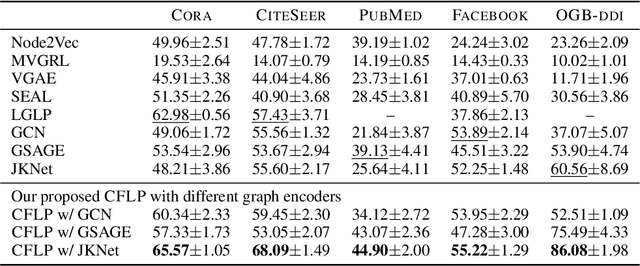
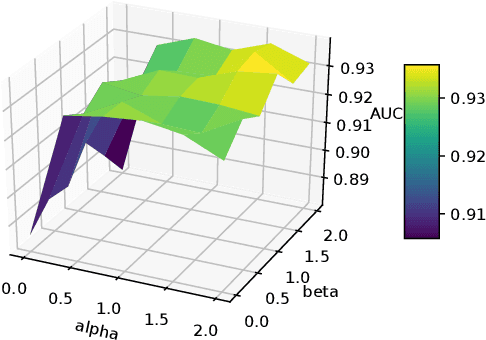
Abstract:Learning to predict missing links is important for many graph-based applications. Existing methods were designed to learn the observed association between two sets of variables: (1) the observed graph structure and (2) the existence of link between a pair of nodes. However, the causal relationship between these variables was ignored and we visit the possibility of learning it by simply asking a counterfactual question: "would the link exist or not if the observed graph structure became different?" To answer this question by causal inference, we consider the information of the node pair as context, global graph structural properties as treatment, and link existence as outcome. In this work, we propose a novel link prediction method that enhances graph learning by the counterfactual inference. It creates counterfactual links from the observed ones, and our method learns representations from both of them. Experiments on a number of benchmark datasets show that our proposed method achieves the state-of-the-art performance on link prediction.
TCN: Table Convolutional Network for Web Table Interpretation
Feb 17, 2021



Abstract:Information extraction from semi-structured webpages provides valuable long-tailed facts for augmenting knowledge graph. Relational Web tables are a critical component containing additional entities and attributes of rich and diverse knowledge. However, extracting knowledge from relational tables is challenging because of sparse contextual information. Existing work linearize table cells and heavily rely on modifying deep language models such as BERT which only captures related cells information in the same table. In this work, we propose a novel relational table representation learning approach considering both the intra- and inter-table contextual information. On one hand, the proposed Table Convolutional Network model employs the attention mechanism to adaptively focus on the most informative intra-table cells of the same row or column; and, on the other hand, it aggregates inter-table contextual information from various types of implicit connections between cells across different tables. Specifically, we propose three novel aggregation modules for (i) cells of the same value, (ii) cells of the same schema position, and (iii) cells linked to the same page topic. We further devise a supervised multi-task training objective for jointly predicting column type and pairwise column relation, as well as a table cell recovery objective for pre-training. Experiments on real Web table datasets demonstrate our method can outperform competitive baselines by +4.8% of F1 for column type prediction and by +4.1% of F1 for pairwise column relation prediction.
Learning Attribute-Structure Co-Evolutions in Dynamic Graphs
Jul 25, 2020



Abstract:Most graph neural network models learn embeddings of nodes in static attributed graphs for predictive analysis. Recent attempts have been made to learn temporal proximity of the nodes. We find that real dynamic attributed graphs exhibit complex co-evolution of node attributes and graph structure. Learning node embeddings for forecasting change of node attributes and birth and death of links over time remains an open problem. In this work, we present a novel framework called CoEvoGNN for modeling dynamic attributed graph sequence. It preserves the impact of earlier graphs on the current graph by embedding generation through the sequence. It has a temporal self-attention mechanism to model long-range dependencies in the evolution. Moreover, CoEvoGNN optimizes model parameters jointly on two dynamic tasks, attribute inference and link prediction over time. So the model can capture the co-evolutionary patterns of attribute change and link formation. This framework can adapt to any graph neural algorithms so we implemented and investigated three methods based on it: CoEvoGCN, CoEvoGAT, and CoEvoSAGE. Experiments demonstrate the framework (and its methods) outperform strong baselines on predicting an entire unseen graph snapshot of personal attributes and interpersonal links in dynamic social graphs and financial graphs.
Calendar Graph Neural Networks for Modeling Time Structures in Spatiotemporal User Behaviors
Jun 11, 2020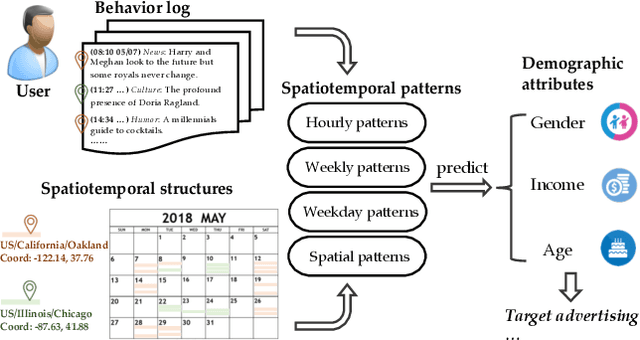
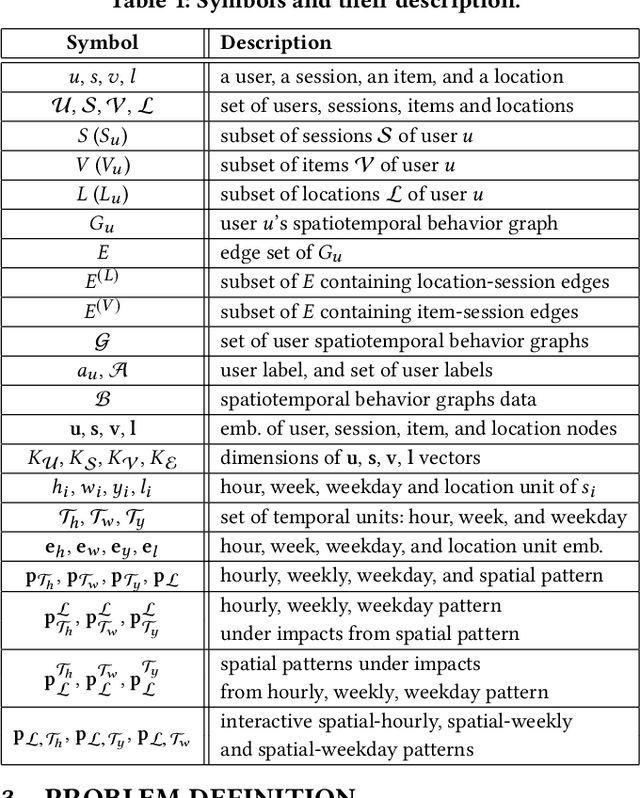
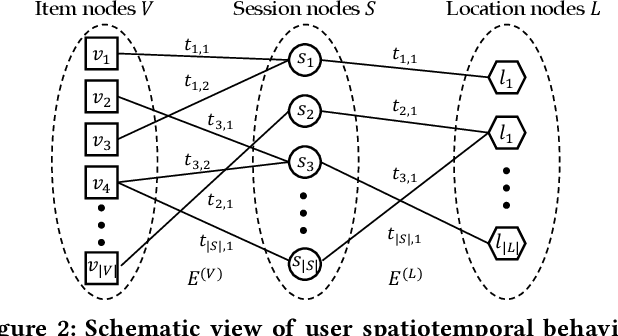

Abstract:User behavior modeling is important for industrial applications such as demographic attribute prediction, content recommendation, and target advertising. Existing methods represent behavior log as a sequence of adopted items and find sequential patterns; however, concrete location and time information in the behavior log, reflecting dynamic and periodic patterns, joint with the spatial dimension, can be useful for modeling users and predicting their characteristics. In this work, we propose a novel model based on graph neural networks for learning user representations from spatiotemporal behavior data. A behavior log comprises a sequence of sessions; and a session has a location, start time, end time, and a sequence of adopted items. Our model's architecture incorporates two networked structures. One is a tripartite network of items, sessions, and locations. The other is a hierarchical calendar network of hour, week, and weekday nodes. It first aggregates embeddings of location and items into session embeddings via the tripartite network, and then generates user embeddings from the session embeddings via the calendar structure. The user embeddings preserve spatial patterns and temporal patterns of a variety of periodicity (e.g., hourly, weekly, and weekday patterns). It adopts the attention mechanism to model complex interactions among the multiple patterns in user behaviors. Experiments on real datasets (i.e., clicks on news articles in a mobile app) show our approach outperforms strong baselines for predicting missing demographic attributes.
 Add to Chrome
Add to Chrome Add to Firefox
Add to Firefox Add to Edge
Add to Edge